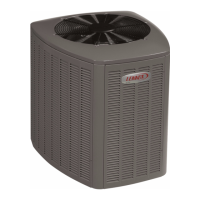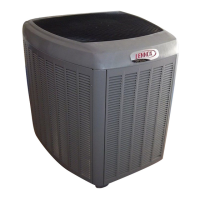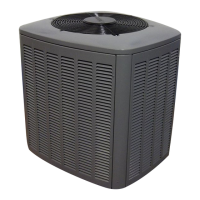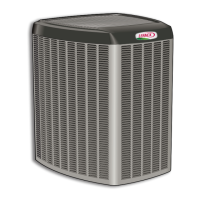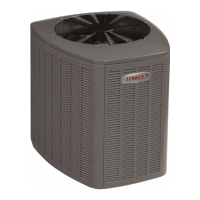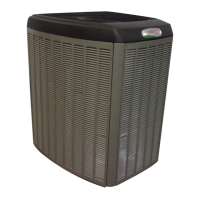Page 10
Factory Charge
Units are factory charged with the amount of R−410A refrig-
erant indicated on the unit rating plate. This charge is based
on a matching indoor coil and outdoor coil with 15 ft. (4.6 m)
line set. For varying lengths of line set, refer to table 3 for re-
frigerant charge adjustment.
TABLE 3
Refrigerant Charge per Line Set Lengths
Liquid Line
Set Diameter
Oz. per 5 ft. (g per 1.5 m) adjust
from 15 ft. (4.6 m) line set*
3/8 in. (9.5 mm) 3 ounce per 5 ft. (85 g per 1.5 m)
*If line length is greater than 15 ft. (4.6 m), add this amount.
If line length is less than 15 ft. (4.6 m), subtract this
amount.
IMPORTANT
Mineral oils are not compatible with R−410A. If oil
must be added, it must be a polyol ester oil.
The compressor is charged with sufficient polyol es-
ter oil for approved line set lengths.
Units Delivered Void of Charge
If the system is void of refrigerant, clean the system using
the procedure described below.
1 − Use dry nitrogen to pressurize the system and check for
leaks. Repair leaks, if possible.
2 − Evacuate the system to remove as much of the moisture
as possible. Use dry nitrogen to pressurize the system
and check for leaks. Repair leaks, if possible.
3 − Use dry nitrogen to break the vacuum and install the pro-
vided filter drier in the system.
4 − Evacuate the system again. Then, weigh the appropriate
amount of R−410A refrigerant (listed on unit nameplate)
into the system.
5 − Monitor the system to determine the amount of moisture
remaining in the oil. Use test kit 10N46 to verify that the
moisture content is within the kit’s dry color range. It
may be necessary to replace the filter drier several
times to achieve the required dryness level.
If system dryness is not verified, the compressor
will fail in the future.
Checking Charge
The outdoor unit should be charged during warm weather.
However, applications arise in which charging must occur in
the colder months. The method of charging is determined by
the unit’s refrigerant metering device and the outdoor
ambient temperature.
Measure the liquid line temperature and the outdoor ambi-
ent temperature as outlined below:
1 − Connect the manifold gauge set to the service valves:
low pressure gauge to vapor valve service port
high pressure gauge to liquid valve service port
2 − Close manifold gauge set valves. Connect the center
manifold hose to an upright cylinder of R−410A .
3 − Set the room thermostat to call for heat. This will create
the necessary load for properly charging the system in
the cooling cycle.
4 − Record outdoor ambient temperature using a digital ther-
mometer.
5 − When the heating demand has been satisfied, switch the
thermostat to cooling mode with a set point of 68F
(20C). When pressures have stabilized, use a digital
thermometer to record the liquid line temperature.
6 − The outdoor temperature will determine which charging
method to use. Proceed with the appropriate charging
procedure.
Charge Using Weigh-in Method, Fixed Orifice or
TXV Systems
Outdoor Temp. < 65ºF (18ºC)
If the system is void of refrigerant, or if the outdoor ambient
temperature is cool, first, locate and repair any leaks and
then weigh in the refrigerant charge into the unit.
1 − Recover the refrigerant from the unit.
2 − Conduct leak check; evacuate as previously outlined.
3 − Weigh in the unit nameplate charge. If weighing facilities
are not available or if charging the unit during warm
weather, use one of the following procedures.
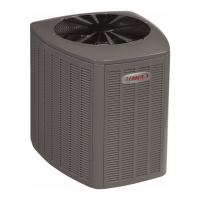
